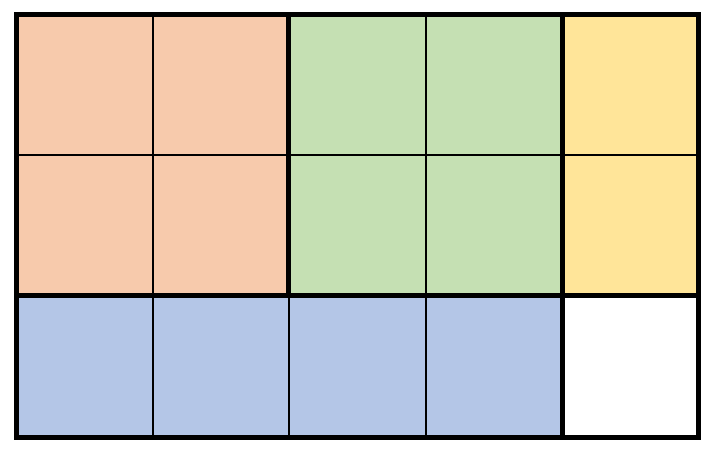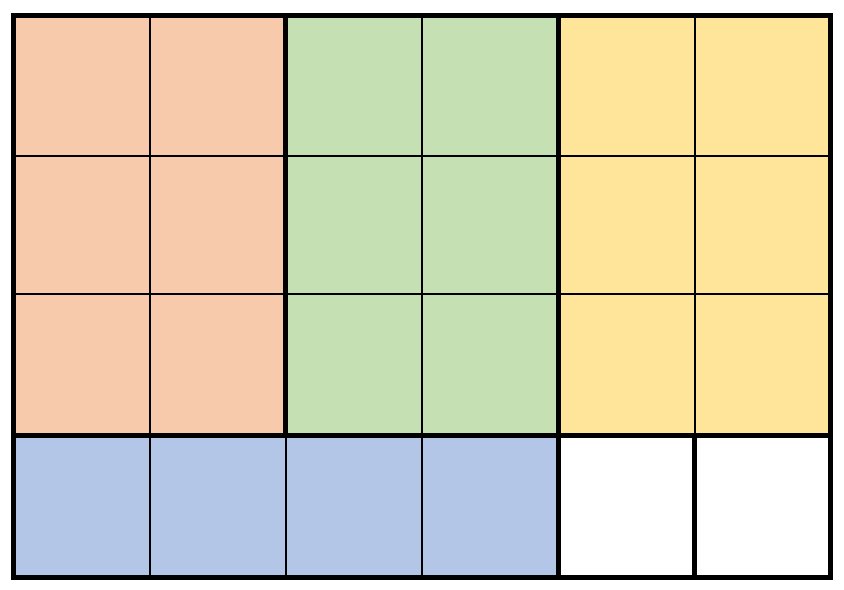卖木头块
难度:
标签:
题目描述
You are given two integers m and n that represent the height and width of a rectangular piece of wood. You are also given a 2D integer array prices, where prices[i] = [hi, wi, pricei] indicates you can sell a rectangular piece of wood of height hi and width wi for pricei dollars.
To cut a piece of wood, you must make a vertical or horizontal cut across the entire height or width of the piece to split it into two smaller pieces. After cutting a piece of wood into some number of smaller pieces, you can sell pieces according to prices. You may sell multiple pieces of the same shape, and you do not have to sell all the shapes. The grain of the wood makes a difference, so you cannot rotate a piece to swap its height and width.
Return the maximum money you can earn after cutting an m x n piece of wood.
Note that you can cut the piece of wood as many times as you want.
Example 1:

Input: m = 3, n = 5, prices = [[1,4,2],[2,2,7],[2,1,3]] Output: 19 Explanation: The diagram above shows a possible scenario. It consists of: - 2 pieces of wood shaped 2 x 2, selling for a price of 2 * 7 = 14. - 1 piece of wood shaped 2 x 1, selling for a price of 1 * 3 = 3. - 1 piece of wood shaped 1 x 4, selling for a price of 1 * 2 = 2. This obtains a total of 14 + 3 + 2 = 19 money earned. It can be shown that 19 is the maximum amount of money that can be earned.
Example 2:

Input: m = 4, n = 6, prices = [[3,2,10],[1,4,2],[4,1,3]] Output: 32 Explanation: The diagram above shows a possible scenario. It consists of: - 3 pieces of wood shaped 3 x 2, selling for a price of 3 * 10 = 30. - 1 piece of wood shaped 1 x 4, selling for a price of 1 * 2 = 2. This obtains a total of 30 + 2 = 32 money earned. It can be shown that 32 is the maximum amount of money that can be earned. Notice that we cannot rotate the 1 x 4 piece of wood to obtain a 4 x 1 piece of wood.
Constraints:
1 <= m, n <= 2001 <= prices.length <= 2 * 104prices[i].length == 31 <= hi <= m1 <= wi <= n1 <= pricei <= 106- All the shapes of wood
(hi, wi)are pairwise distinct.
代码结果
运行时间: 145 ms, 内存: 21.7 MB
/*
题目思路:
1. 我们需要动态规划来解决这个问题。使用一个二维数组dp,其中dp[i][j]表示高度为i,宽度为j的矩形能得到的最多钱数。
2. 初始化dp数组,dp[i][j] = 0,因为如果没有prices提供的木块,这些大小的矩形是不能卖钱的。
3. 对于每一个给定的木块尺寸和价格,更新dp数组的相应位置。
4. 尝试所有可能的切割方法,不断更新dp数组。
5. 最终结果保存在dp[m][n]中。
*/
import java.util.Arrays;
public class Solution {
public int maxSellingPrice(int m, int n, int[][] prices) {
int[][] dp = new int[m + 1][n + 1];
Arrays.stream(prices).forEach(price -> dp[price[0]][price[1]] = price[2]);
for (int i = 1; i <= m; i++) {
for (int j = 1; j <= n; j++) {
for (int k = 1; k <= i / 2; k++) {
dp[i][j] = Math.max(dp[i][j], dp[k][j] + dp[i - k][j]);
}
for (int k = 1; k <= j / 2; k++) {
dp[i][j] = Math.max(dp[i][j], dp[i][k] + dp[i][j - k]);
}
}
}
return dp[m][n];
}
}解释
方法:
时间复杂度:
空间复杂度: